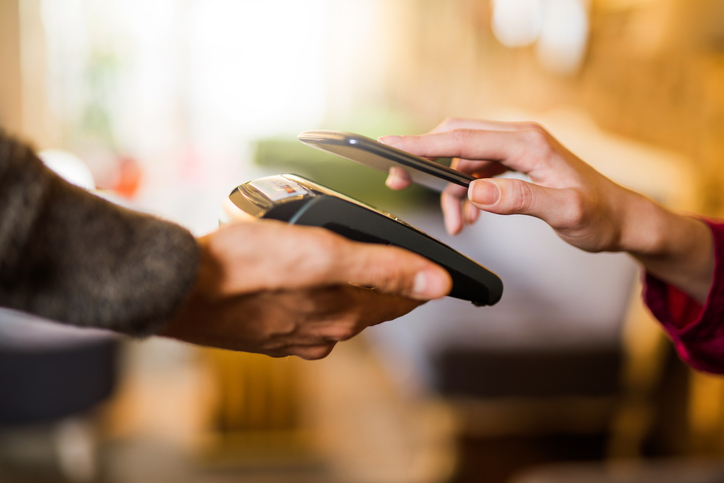Flexible payment technologies are on the ascent as consumers flock to cardless payment alternatives in search of a more convenient shopping experience.
Until the launch of Bankcard in mid-1970s, undertaking a little retail therapy in Australia required payment in one of three ways; cash, store credit or layby. You could buy big-ticket items like furniture and appliances on a hire purchase arrangement and while credit cards did exist, they were mostly a luxury item afforded only to high income earners.
So, your average Joe was left to save up before splurging, accept store-set credit terms or put purchases on layby. Layby meant making periodic payments in-store and taking home the goods only when the balance hit zero.
These constraints may have taught buyers a thing or two about living within their means, but that lack of flexibility would simply not fly with today’s convenience-hungry consumer. Shoppers have access to an increasing array of payment alternatives, with both online and bricks and mortar retailers now expected to offer the full breadth of options.
The future is cardless
According to Roy Morgan research conducted in June 2018, the expectation that Australia was headed toward a cashless society is being outflanked by a trend toward cardless transactions. As we increasingly flock to digital payment platforms, options other than credit and debit cards are on the rise.
According to the study, 41 per cent of Australians used PayPal to conduct an online transaction within the last twelve months. Relatively new buy-now-pay-later (BNPL) services (Afterpay, Zip Pay and Zip Money) were used by 6.1% within the last year, with these new methods set to threaten traditional bank products (chiefly credit cards) as they provide consumers with low levels of credit minus the authorisation process. That doesn’t mean customers are racking up debt, however. According to executive director David Hancock, around 90% of Afterpay customers use a debit card for repayments, effectively enjoying the best of both worlds.
Contactless and cardless payments types like Apple Pay, Samsung Pay and Google Pay (which replaced Android Pay and Google Wallet) gained ground and were used by around 6% of the population within the last year. They are particularly popular with the 25 to 34-year age bracket and, as this demographic is already comfortable with the technology, we can expect them to stick with it and will therefore likely see growth.
We survey Neto merchants each year to gain market insights, which we publish in our ‘State of Ecommerce’ report. The 2018 customer data shows a direct correlation to Roy Morgan’s numbers, with BNPL facilities enjoying substantial growth — doubling the share of spend seen in 2017. PayPal still makes up the bulk (54%) of transactions, with credit and debit cards still well represented at 39% of overall payment numbers.
What it means to retailers
Above all, customers want security, convenience and ease-of-use. As consumers increasingly shop while on-the-go, PayPal has found that 43% of mobile shoppers will abandon a purchase if it is too difficult or takes too long and that 30% get annoyed if a website is not optimised for mobile[1]. For retailers taking an omnichannel approach, it’s no longer good enough to treat online as a sideline. Your website and check-out functionality must deliver as anticipated by your customer; it must be designed with mobile in mind, include easy navigation and a smooth and secure payment experience, so a PCI-compliant retail platform is essential. You’ll also want to opt for a solution that offers seamless integration with a range of payment types, to ensure your offering aligns with changing consumer preferences.
As we head into the Christmas season, it’s even more imperative to get it right and avoid the bane of e-retail — the abandoned shopping cart.
Digging the data
Of course, there are some (minimal) additional outlays associated with offering a broader range of payment options, but this is indicative of the evolving split between ecommerce operational and marketing costs.
There are implications beyond any extra expense, because digital payment platforms provide instant access to shopper data you would have killed for back in the days when cash was king. You have clear insight into who, what, when, where how often. Trusted payment methods like PayPal and BNPL also help attract and improve customer loyalty, so you are likely to enjoy a rise in repeat business.
Our merchant data shows us that preference for payment types tends to stick within specific market verticals. PayPal is the favoured option for buyers of electronics & Hi-Fi equipment, supplements & nutrition and tools & hardware. Credit cards tend to be used to purchase food & alcohol, health & beauty and homewares. BNPL options are seeing good growth in pets & animals, fashion and sports & recreation.
If you’re running an ecommerce store and still sitting on the fence when it comes to new payment methods, you can no longer afford to dawdle. Today’s shopper expects a full range of options and a hassle-free experience, so you’ll need to ensure you can deliver on that promise before you commit – or get your abandoned cart clean up strategy in place.
By Ryan Murtagh – CEO, Neto

